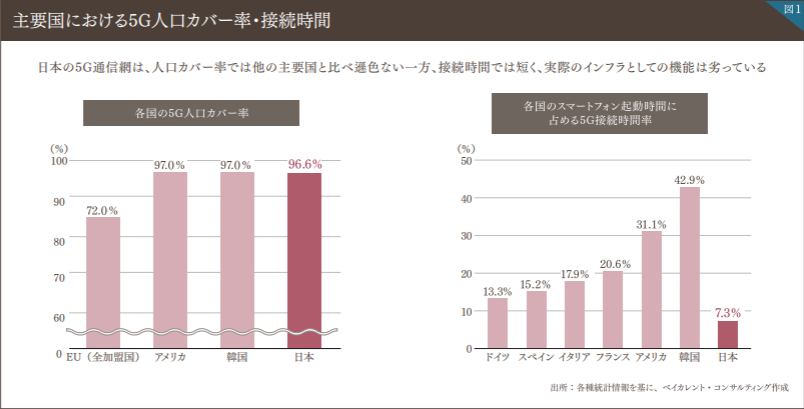Forecasting Business Opportunities for Telecommunications Carriers in the Beyond the 5G/6G Era

The Underwhelming Uptake of 5G
The fifth-generation mobile communication system (5G) began commercial service in Japan in March 2020. More than three years have already passed since its launch. 5G, with its features of high-speed, large capacity, ultra-low latency, and massive simultaneous connections, was expected to revolutionize wireless communication. In contrast to the previous 4G systems, 5G was also anticipated to facilitate the shift to wireless infrastructure for communication between devices such as IoT (Internet of Things).
Currently, all new consumer smartphones are 5G-compatible, and as of March 2023, the 5G population coverage in Japan has reached a high of 96.6%. However, the percentage of time that users are actually connected to 5G, referred to as the "utilization rate," remains at only 7%. It is difficult to say that Japan's 5G infrastructure has been optimized for actual usage patterns.
Several factors contribute to the low utilization rate, including reduced investment due to government pressure to lower fees, interference from other communications using the same 5G frequencies, and low base station performance resulting from the slow adoption of Massive MIMO technology, which is designed to enhance communication stability and speed.

Local 5G Falls Short of Expectations
5G was expected to be utilized not only by consumers but also by private entities such as companies and local governments, through what is known as "Local 5G." The assumption was that industry use cases would emerge and infrastructure development would be led by entities outside of the telecommunications carriers.
However, ...
To read the full text, please download the PDF.
DownloadPDF(2.06 MB)